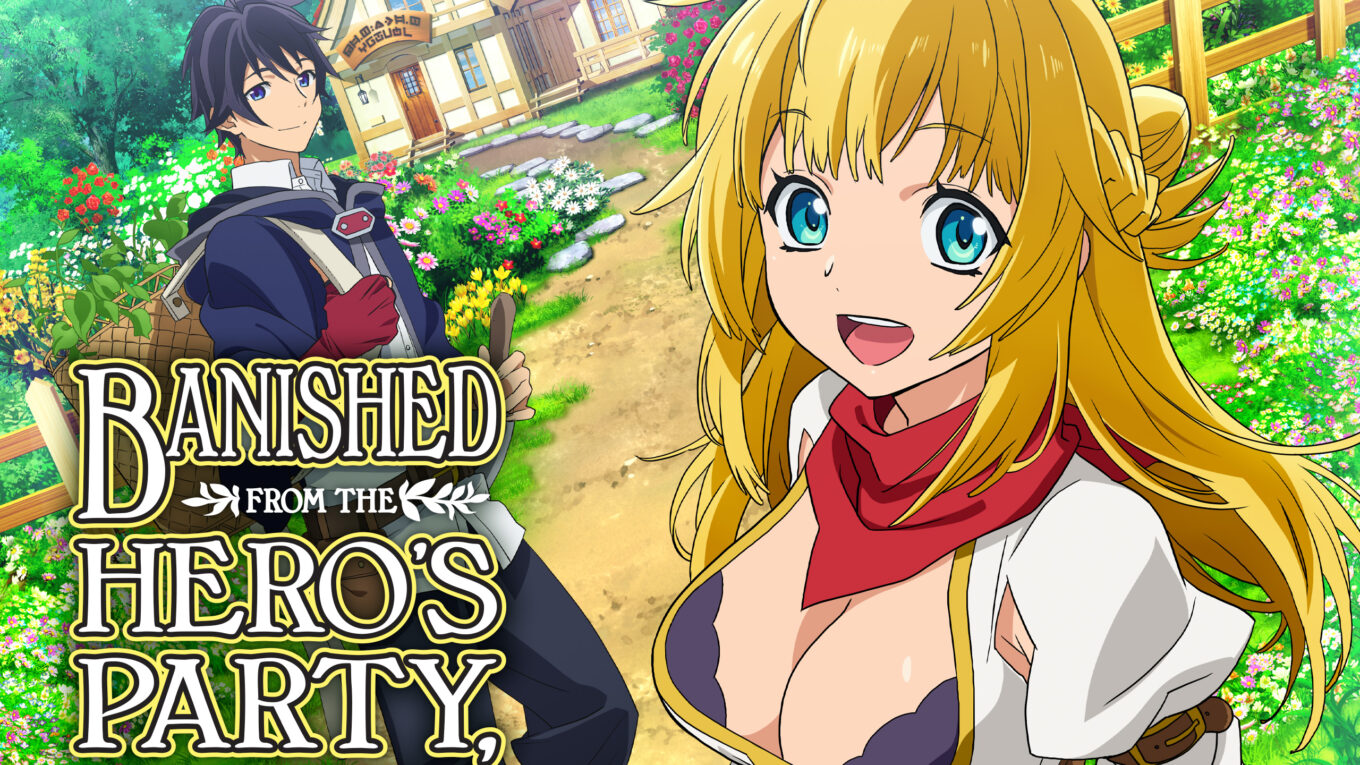English Dub Season Review: Banished From The Hero’s Party, I Decided To Live A Quiet Life In The Countryside S1-S2
Based on the Japanese light novel series written by Zappon and illustrated by Yasumo. The story takes place in a medieval fantasy setting far away from the reaches of demons and war, near the borderland of Zoltan, D-Rank adventurer Red lives a normal existence. Through perseverance and hard work, his dream of starting his own apothecary and peaceful life in the countryside finally came true. Abruptly, Red gets a live-in partner and assistant named Rit—the princess of Duchy Loggervia and an adventurer herself—who gives everything up to join him.
Although honest, kind, and loved by all, Red has a secret shared only with Rit: his real name is Gideon, brother of Ruti Ragnason, the “Hero” and a former member of her party. Ares Drowa, the “Sage,” kicked Red out of their party after their war against the Demon Lord after deciding he was weak and insignificant. Even though Red has left the Hero’s party behind by assuming a new life together with Rit, his past has yet to let go of him.
On the Technical this anime television series adaptation was animated by Wolfsbane and Studio Flad and directed by Makoto Hoshino, with Megumi Shimizu handling the series’ scripts, Ruriko Watanabe designing the characters, and Yukari Hashimoto composing the music. The opening theme song is “Beautiful Day” by Yui Nishio, while the ending theme song is “All the Same” by Jyocho. While season Two was directed by Satoshi Takafuji, with Makoto Hoshino serving as chief director, and Studio Flad returning as the production studio. The opening theme song for Season Two is “Routine Life”, which is again performed by Yui Nishio, while the ending theme song is “Guide and Devote”, again performed by Jyocho.
“Banished from the Hero’s Party” presents a refreshing take on the fantasy genre, standing out in a crowded field dominated by isekai anime. The series begins with a premise that sets it apart from typical fantasy narratives: a hero, banished from his party, decides to seek a peaceful life away from the chaos of his past. This protagonist, despite possessing great power, desires nothing more than a quiet existence free from the burdens of heroism and death. The show steers clear of grand quests and epic battles, focusing instead on personal freedom and the pursuit of happiness on one’s own. This exploration of a hero’s desire to escape the expectations imposed on him offers a unique and engaging story that resonates with audiences tired of conventional fantasy tropes.
Season 1 captivates viewers with its deep thematic exploration, particularly the tension between living life according to one’s desires versus conforming to societal expectations. Characters like Ruti, who struggles with the overwhelming burden of her heroic blessing, highlight these themes, making the narrative both engaging and thought-provoking. The show’s emphasis on relationship dynamics, especially the romantic development between Red and Rit, adds emotional depth, creating a connection with the audience that goes beyond typical fantasy storytelling. The animation and music enhance this experience, with well-executed scenes and a soothing soundtrack that perfectly complements the narrative’s tone.
As the series progresses into Season 2, it expands on the themes introduced in the first season while bringing new conflicts and characters into the mix. While the first season focuses on the protagonist’s quest for a peaceful life, the second season delves deeper into the consequences of making such a choice. And it isn’t subtle with the introduction of the semi-antagonist character known as “Van”, a new hero who strictly adheres to his perceived duties, and contrasts sharply with Gideon, who has learned to navigate life beyond these rigid constraints. This ideological clash and sense of escalation adds a new layer of tension to the story, offering a fresh perspective on the ongoing struggle between duty and personal freedom, though it occasionally struggles to match the emotional resonance of the first season.
The shift in tone is also another notable difference between the two seasons. Season 2 introduces new characters and explores different relationships, moving away from the romantic subplot that was central to the first season. While some fans might miss the focus on Red and Rit’s relationship, the new developments provide a broader view of the world and its inhabitants, offering variety and depth to the narrative. Ruti’s journey of adapting to a normal life with Tisse provides a compelling juxtaposition to Van’s rigid adherence to his role, adding complexity to the story’s aforementioned themes of walking your path vs the expectations people put on you.
The animation is noteworthy for its ability to capture both the serene moments of the protagonist’s new life and the intensity of his past. Though the series doesn’t boast top-tier visuals, the animation is smooth and fitting for the tone of the story. The fight scenes, though infrequent, are well choreographed, adding quality to the show. The music is equally effective, with a soothing soundtrack that enhances the mood without overshadowing the narrative. The opening and ending themes perfectly align with the show’s overall tone, contributing to the immersive experience.
Overall, the show itself while not perfect, managed to deliver a compelling narrative across both seasons, even if Season 2 doesn’t always stick the landing in certain areas. The series remains an engaging blend of fantasy, slice-of-life, and philosophical inquiry, appealing to viewers who appreciate stories that challenge conventional genre norms. While the second season introduces new conflicts and characters that keep the story fresh, some elements may feel familiar to long-time fans. Nevertheless, the series as a whole offers a unique and thoughtful take on the fantasy genre, making it a standout choice for those seeking something different from the usual fare.






















"There are also other characters that come and go (also owned by the Warner Bros. Discovery conglomerate media company)."
Huh. Is that just referring to other characters from the show itself, or is this implying that the new season is going to have cameos from other WBD IPs